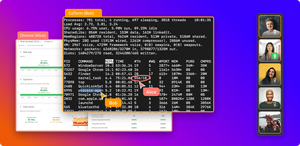Code reviews are an important part of the software development process. They allow you to catch errors early, improve the quality of your code, and learn from your peers. However, they can also be a daunting experience, especially if you're new to the process. In this guide, we'll cover everything you need to know to conduct effective code reviews.
Step 1: Understand the Purpose of Code Reviews
Before you begin reviewing someone else's code, it's important to understand the purpose of code reviews. Code reviews are not just about finding bugs or errors in the code. They are also about improving the quality of the code, making sure it's maintainable, and adhering to best practices. Code reviews can also help you learn from your peers and gain insights into how they approach problems.
Step 2: Review the Code Thoroughly
When reviewing code, it's important to review it thoroughly. This means going through the code line by line, checking for errors, and ensuring that it adheres to best practices and your team’s style. It's also important to check for potential security vulnerabilities and performance issues. Don't rush through the code review process, take your time and make sure that you're providing comprehensive feedback.
Step 3: Be Constructive
When conducting a code review, it's important to be constructive. Avoid being overly critical or harsh, and instead focus on providing feedback that will help the developer improve their code. Instead of saying, "This code is terrible," try saying, "Have you considered using a different approach here?" This will encourage the developer to think critically about their code and will help build a positive and collaborative relationship.
Step 4: Prioritize Issues
Not all issues are created equal. Some issues may be more critical than others. When providing feedback, prioritize the issues based on their severity. For example, a security vulnerability should be addressed immediately, whereas a minor formatting issue can be addressed later. Prioritizing the issues will help the developer focus on the most critical issues first and will help ensure that the code is of high quality.
Step 5: Provide Specific Feedback
When providing feedback, it's important to be specific. Instead of saying, "This code is hard to read," try saying, "Can you break this code up into smaller functions?" Specific feedback will help the developer understand what they need to do to improve their code and will help them make changes more efficiently.
Step 6: Use Code Review Tools
There are a number of code review tools available that can make the code review process more efficient. Tools like GitHub and Bitbucket have built-in code review functionality, which allows you to leave comments directly on the code. This can help streamline the feedback process and make it easier to collaborate with other developers. Some teams also use pair programming to avoid having to do code reviews after the fact.
Step 7: Follow Up
After providing feedback, it's important to follow up with the developer to make sure that they understand your feedback and are making the necessary changes. Don't be afraid to ask questions or provide additional feedback if needed. Following up will help ensure that the code is of high quality and will help build a positive and collaborative relationship.
There most common pitfalls to avoid when doing code reviews
- Focusing on personal preferences: Reviewers may focus on their personal preferences rather than objective best practices. It's important to focus on objective best practices and on what you have agreed on as a team and to avoid getting bogged down in personal preferences.
- Focusing too much on minor issues: It's easy to get caught up in minor and stylistic issues like formatting or naming conventions, but it's important to prioritize the more critical issues like security vulnerabilities or performance issues.
- Being too harsh or critical: Remember to be constructive in your feedback and avoid being overly critical or harsh. Your goal should be to help your peers improve their code, not to tear them down.
- Not providing enough context: It's important to provide context when providing feedback. This means explaining why you're suggesting a particular change or pointing out a potential issue. Without context, the developer may not understand why the feedback is important.
- Failing to consider the bigger picture: When reviewing code, it's important to consider the bigger picture. This means thinking about how the code fits into the overall system and how it will impact other parts of the code to make it easier to maintain down the line.
- Not addressing root causes: Reviewers may only address symptoms of issues rather than the root causes. It's important to dig deeper and address the root causes of issues to ensure that they don't reoccur in the future.
How you can improve your code reviews
- Focus on high-level issues first: It's important to prioritize high-level issues like architecture, design, and functionality over minor issues like formatting and naming conventions. This ensures that the most important issues are addressed first and that the code is of high quality.
- Provide constructive feedback: When providing feedback, it's important to be constructive and provide actionable suggestions for improvement. Avoid being overly critical or harsh, and focus on helping the developer improve their code.
- Follow up and address issues: After the review is completed, it's important to follow up with the developer to ensure that they understand the feedback and to address any outstanding issues. This ensures that the code is of high quality and that the issues are resolved in a timely manner.
- Continuously improve the process: Code reviews should be an ongoing process of continuous improvement. This means identifying areas for improvement, incorporating feedback from team members, and making changes to the review process as necessary.
- Try pair programming: Some teams eliminate asynchronous code reviews all together by writing code together in real-time. But pair programming and code reviews can also complement each other and provide additional layers of quality assurance and knowledge sharing in software development projects. Mob programming, where more than two users write code together is a more extreme version of this and further fosters team alignment on code changes.
By following these best practices, you can conduct effective code reviews that improve the quality of your code and help you grow as a developer. It's important to remember that code reviews are a collaborative process and that everyone involved should work together to improve the quality of the code.
Conclusion
Code reviews are an essential part of the software development process. By understanding the purpose of code reviews, being constructive, reviewing the code thoroughly, prioritizing issues, providing specific feedback, using code review tools, and following up, you can conduct effective code reviews and improve the quality of your code. Remember, code reviews are not just about finding bugs, they're also about learning from your peers and improving your skills as a developer. Happy reviewing!





